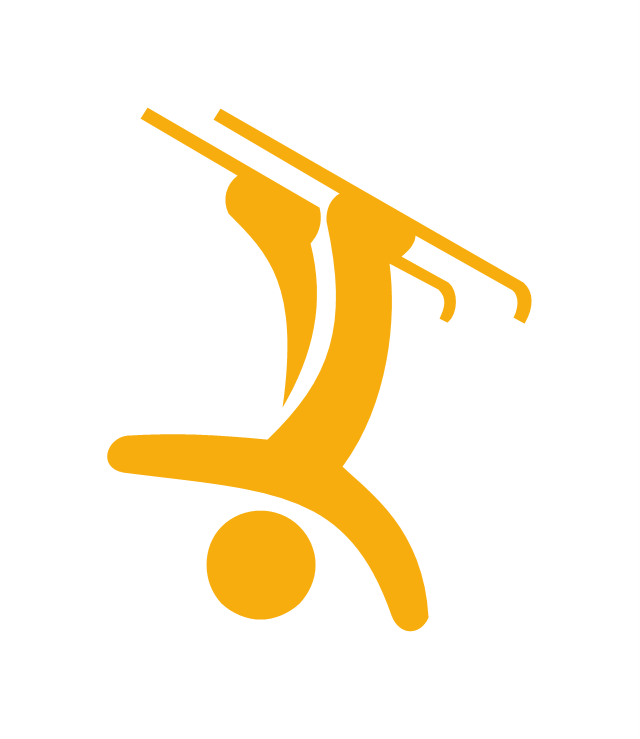"The 2010 Winter Olympics, officially known as the XXI Olympic Winter Games or the 21st Winter Olympics, were a major international multi-sport event held from February 12 to February 28, 2010, in Vancouver, British Columbia, Canada, with some events held in the suburbs of Richmond, West Vancouver and the University Endowment Lands, and in the resort town of Whistler. Approximately 2,600 athletes from 82 nations participated in 86 events in fifteen disciplines. Both the Olympic and Paralympic Games were being organized by the Vancouver Organizing Committee (VANOC), headed by John Furlong. ...
With 14, Canada broke the record for the most gold medals won at a single Winter Olympics, which was 13, set by the former Soviet Union in 1976 and Norway in 2002. The United States won the most medals in total, their second time doing so at the Winter Olympics, and broke the record for the most medals won at a single Winter Olympics with 37, a record held up to then by Germany in 2002 with 36 medals. Athletes from Slovakia and Belarus won the first Winter Olympic gold medals for their nations." [2010 Winter Olympics. Wikipedia]
The World map example "Gold Medals in 2010 Winter Olympics" is created using the ConceptDraw PRO diagramming and vector drawing software extended with the Winter Sports solution.
The Winter Sports solution from the Sport area of ConceptDraw Solution Park contains the vector stencils library "Winter sports pictograms" and examples of diagrams and infographics.
www.conceptdraw.com/ solution-park/ sport-winter
With 14, Canada broke the record for the most gold medals won at a single Winter Olympics, which was 13, set by the former Soviet Union in 1976 and Norway in 2002. The United States won the most medals in total, their second time doing so at the Winter Olympics, and broke the record for the most medals won at a single Winter Olympics with 37, a record held up to then by Germany in 2002 with 36 medals. Athletes from Slovakia and Belarus won the first Winter Olympic gold medals for their nations." [2010 Winter Olympics. Wikipedia]
The World map example "Gold Medals in 2010 Winter Olympics" is created using the ConceptDraw PRO diagramming and vector drawing software extended with the Winter Sports solution.
The Winter Sports solution from the Sport area of ConceptDraw Solution Park contains the vector stencils library "Winter sports pictograms" and examples of diagrams and infographics.
www.conceptdraw.com/ solution-park/ sport-winter
"Figure skating is a sport and activity in which individuals, duos, or groups perform on figure skates on ice. The four Olympic disciplines are men's singles, ladies' singles, pair skating, and ice dancing. Non-Olympic disciplines include synchronized skating and four skating. In senior-level competition, skaters generally perform two programs (short and long) which, depending on the discipline, may include spins, jumps, moves in the field, lifts, throw jumps, death spirals, and other elements or moves.
The blade has a groove on the bottom creating two distinct edges – inside and outside. In figure skating, the skater should skate on one edge of the blade and not on both at the same time, which is referred to as a flat edge. Skates used in single and pair skating have a set of large, jagged teeth called toe picks on the front of the blade. Ice dancing blades are an inch shorter in the rear and have smaller toe picks.
Figure skaters compete at various levels from beginner up to the Olympic level (senior) at local, national, and international competitions. The International Skating Union (ISU) regulates international figure skating judging and competitions. These include the Winter Olympic Games, the World Championships, the World Junior Championships, the European Championships, the Four Continents Championships, and the Grand Prix series (senior and junior).
The sport is also associated with show business. Major competitions generally conclude with exhibition galas, in which the top skaters from each discipline perform non-competitive programs. Many skaters, both during and after their competitive careers, also skate in ice shows which run during the competitive season and the off-season." [Figure skating. Wikipedia]
The vector icon example "Figure skating" represents one of 20 symbols from the Winter sports pictograms library for the ConceptDraw PRO diagramming and vector drawing software.
The design elements library Winter sports pictograms is included in the Winter Sports solution from the Sport area of ConceptDraw Solution Park. www.conceptdraw.com/ solution-park/ sport-winter
The blade has a groove on the bottom creating two distinct edges – inside and outside. In figure skating, the skater should skate on one edge of the blade and not on both at the same time, which is referred to as a flat edge. Skates used in single and pair skating have a set of large, jagged teeth called toe picks on the front of the blade. Ice dancing blades are an inch shorter in the rear and have smaller toe picks.
Figure skaters compete at various levels from beginner up to the Olympic level (senior) at local, national, and international competitions. The International Skating Union (ISU) regulates international figure skating judging and competitions. These include the Winter Olympic Games, the World Championships, the World Junior Championships, the European Championships, the Four Continents Championships, and the Grand Prix series (senior and junior).
The sport is also associated with show business. Major competitions generally conclude with exhibition galas, in which the top skaters from each discipline perform non-competitive programs. Many skaters, both during and after their competitive careers, also skate in ice shows which run during the competitive season and the off-season." [Figure skating. Wikipedia]
The vector icon example "Figure skating" represents one of 20 symbols from the Winter sports pictograms library for the ConceptDraw PRO diagramming and vector drawing software.
The design elements library Winter sports pictograms is included in the Winter Sports solution from the Sport area of ConceptDraw Solution Park. www.conceptdraw.com/ solution-park/ sport-winter
"Freestyle skiing is a form of skiing which originally encompassed three disciplines: aerials, moguls, and ski ballet. Today, freestyle skiing consists of aerial, moguls, skicross, boardercross, Ski half-pipe, Snowboard half-pipe and Slopestyle and have become part of the Olympics. ...
The International Ski Federation (FIS) recognized freestyle as a sport in 1979 and brought in new regulations regarding certification of athletes and jump techniques in an effort to curb the dangerous elements of the competitions. The first World Cup series was staged in 1980 and the first World Championships took place in 1986 in Tignes, France. Freestyle skiing was a demonstration event at the 1988 Winter Olympics in Calgary. Mogul skiing was added as an official medal event at the 1992 Winter Olympics in Albertville, and the aerials event was added for the 1994 Winter Olympics in Lillehammer. ...
Currently there are two main branches of freestyle skiing: one encompassing the more traditional events of moguls and aerials, and a newer branch often called new school, comprising events such as halfpipe, big air, slopestyle, and big mountain or free-skiing. Freeskiing shares characteristics with street skateboarding, BMX, and inline skating. New school skiing has grown so much that new ski companies were created, companies that strictly make twin-tip skis — skis that are designed for taking off and landing "fakie", or "switch" (backwards) on jumps and rails." [Freestyle skiing. Wikipedia]
The vector icon example "Freestyle skiing" represents one of 20 symbols from the Winter sports pictograms library for the ConceptDraw PRO diagramming and vector drawing software.
The design elements library Winter sports pictograms is included in the Winter Sports solution from the Sport area of ConceptDraw Solution Park. www.conceptdraw.com/ solution-park/ sport-winter
The International Ski Federation (FIS) recognized freestyle as a sport in 1979 and brought in new regulations regarding certification of athletes and jump techniques in an effort to curb the dangerous elements of the competitions. The first World Cup series was staged in 1980 and the first World Championships took place in 1986 in Tignes, France. Freestyle skiing was a demonstration event at the 1988 Winter Olympics in Calgary. Mogul skiing was added as an official medal event at the 1992 Winter Olympics in Albertville, and the aerials event was added for the 1994 Winter Olympics in Lillehammer. ...
Currently there are two main branches of freestyle skiing: one encompassing the more traditional events of moguls and aerials, and a newer branch often called new school, comprising events such as halfpipe, big air, slopestyle, and big mountain or free-skiing. Freeskiing shares characteristics with street skateboarding, BMX, and inline skating. New school skiing has grown so much that new ski companies were created, companies that strictly make twin-tip skis — skis that are designed for taking off and landing "fakie", or "switch" (backwards) on jumps and rails." [Freestyle skiing. Wikipedia]
The vector icon example "Freestyle skiing" represents one of 20 symbols from the Winter sports pictograms library for the ConceptDraw PRO diagramming and vector drawing software.
The design elements library Winter sports pictograms is included in the Winter Sports solution from the Sport area of ConceptDraw Solution Park. www.conceptdraw.com/ solution-park/ sport-winter
- Sport pictograms. Olympic Games | Winter Sports . Olympic Games ...
- Winter Sports Olympic Games Infographics. Medal Table | Winter ...
- Snowboard - Winter sports pictograms | Design elements - Winter ...
- Winter Sports . Olympic Games Infographics. Medal Table
- Figure skating - Winter sports pictograms | Winter Olympics - Figure ...
- Winter Sports . Olympic Games Illustrations. Medal Summary | Winter ...
- Winter Sports | Winter Sports . Olympic Games Illustrations. Medal ...
- Sport pictograms. Olympic Games | Vector clipart - People | Skeleton ...
- Winter Sports | Winter Sports . Olympic Games Illustrations. Medal ...
- Winter Sports . Olympic Games Illustrations. Medal Summary | Winter ...
- Winter Sports . Olympic Games Infographics. Medal Table
- Gold Medals in 2010 Winter Olympics - Infographics with winter ...
- Winter Olympics - Curling | Winter Sports . Olympic Games ...
- Sport pictograms. Olympic Games | Skeleton - Winter sports ...
- Sochi 2014 Olympics - Men's hockey tournament schedule ...
- Winter Sports | Winter Olympics - Bobsleigh | Winter Olympics ...
- Ski jumping - Winter sports pictograms | Winter Olympics - Ski ...
- Skeleton - Winter sports pictograms | Freestyle skiing - Winter sports ...
- Design elements - Winter sports pictograms | Winter Sports | Winter ...
- Winter Sports | Design elements - Winter sports pictograms ...


